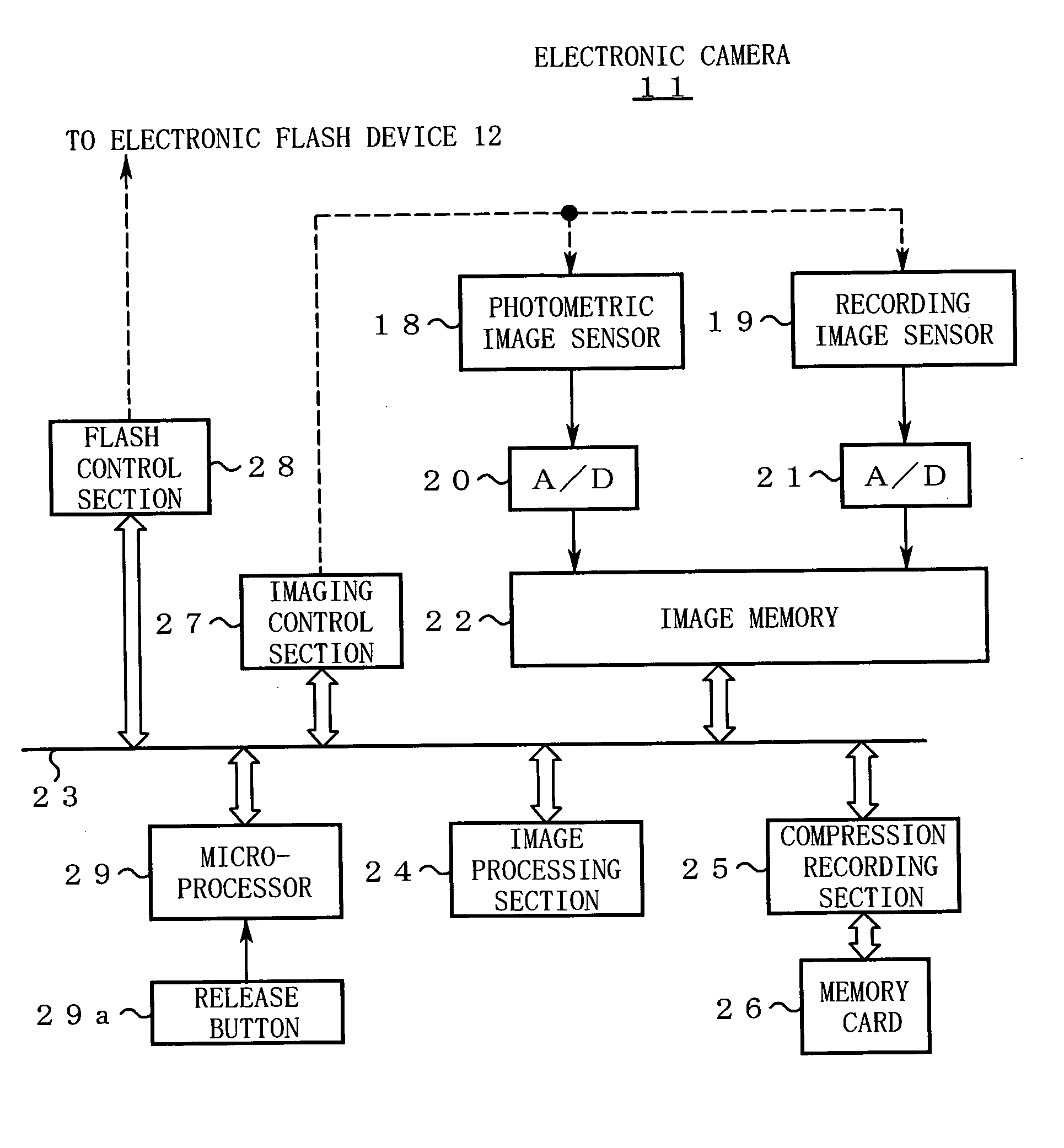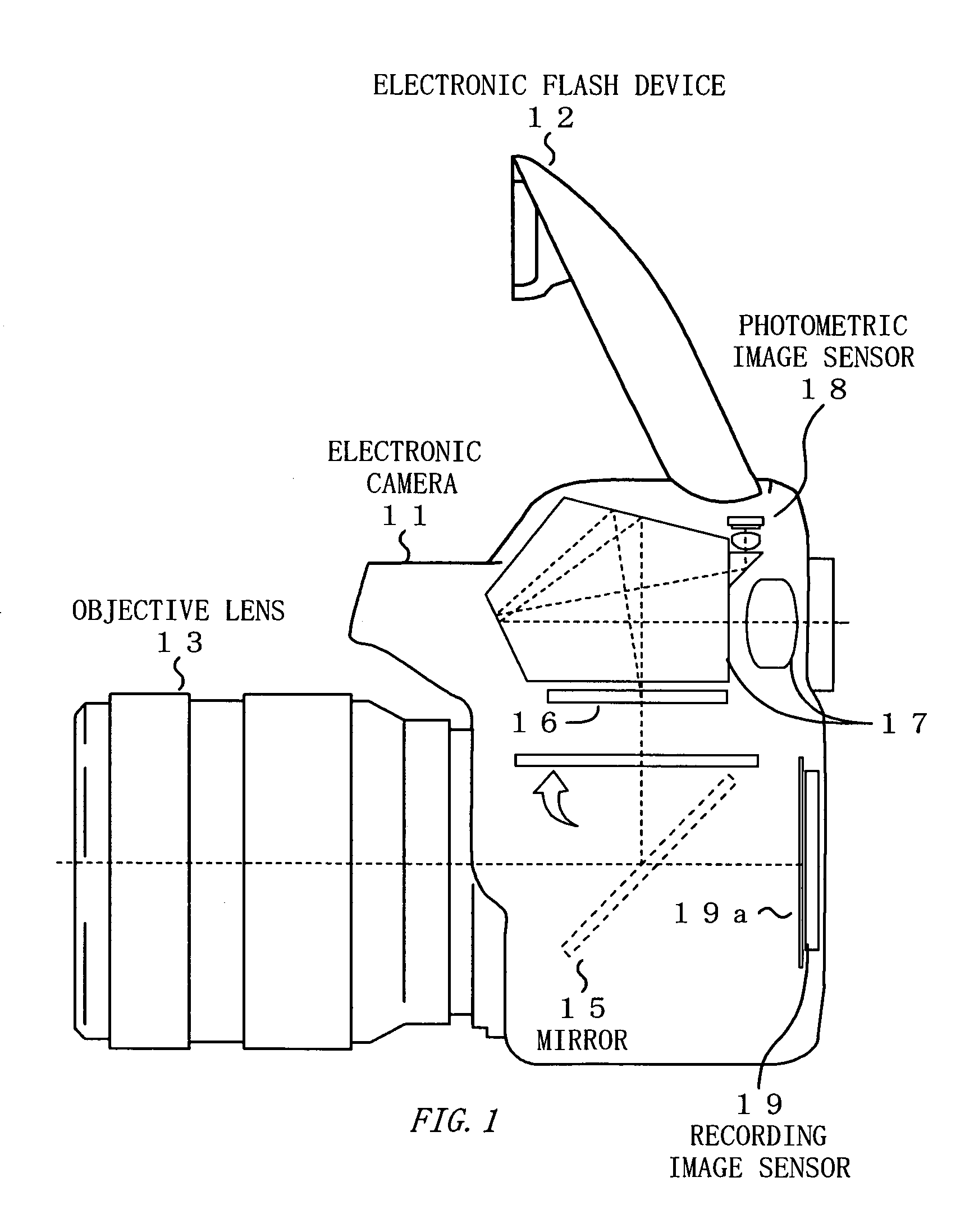Electronic camera having color adjustment function and program therefor
- Summary
- Abstract
- Description
- Claims
- Application Information
AI Technical Summary
Benefits of technology
Problems solved by technology
Method used
Image
Examples
first embodiment
Operation of First Embodiment
[0095]FIG. 3 is a flowchart showing the operation of the first embodiment. The operation of the electronic camera 11 will be described below in order of step numbers shown in FIG. 3.
[0096] [Step S1] When the main power of the electronic camera 11 is turned on, the microprocessor 29 starts initialization processing to be performed at the time of power application. In the initialization processing, the microprocessor 29 acquires information relating to a color temperature of a flash from the electronic flash device 12 and calculates a first white balance adjustment value suitable for the color temperature.
[0097] [Step S2] The microprocessor 29 judges whether the electronic camera 11 is in a flash-shooting mode.
[0098] If the flash-shooting mode is not set, the microprocessor 29 makes a transition to an ordinary photographing routine (not shown) to perform known ordinary photographing. In the ordinary photographing routine, an image shot with the photomet...
second embodiment
Operation of Second Embodiment
[0158]FIG. 6 is a flowchart showing the operation of the second embodiment. The operation of the electronic camera 11 will be described below in order of step numbers shown in FIG. 6.
[0159] [Steps S31-S36] Steps S31-S36 are the same as steps S3-S8 of the first embodiment and hence will not be described to avoid redundancy.
[0160] [Step S37] The microprocessor 29 accesses the image memory 22 and reads low-chroma regions (i.e., regions where the chroma is lower than a prescribed value). The microprocessor 29 determines chromaticity (R / G and B / G) of each small region (e.g., each pixel) using RGB components in the low-chroma regions, and determines the center of distribution of those sets of chromaticity values. Then, the microprocessor 29 calculates a separation between the distribution center and the black body locus on the chromaticity plane.
[0161] [Step S38] The microprocessor 29 judges whether the separation calculated at step S37 is greater than a t...
PUM
 Login to View More
Login to View More Abstract
Description
Claims
Application Information
 Login to View More
Login to View More - R&D
- Intellectual Property
- Life Sciences
- Materials
- Tech Scout
- Unparalleled Data Quality
- Higher Quality Content
- 60% Fewer Hallucinations
Browse by: Latest US Patents, China's latest patents, Technical Efficacy Thesaurus, Application Domain, Technology Topic, Popular Technical Reports.
© 2025 PatSnap. All rights reserved.Legal|Privacy policy|Modern Slavery Act Transparency Statement|Sitemap|About US| Contact US: help@patsnap.com



